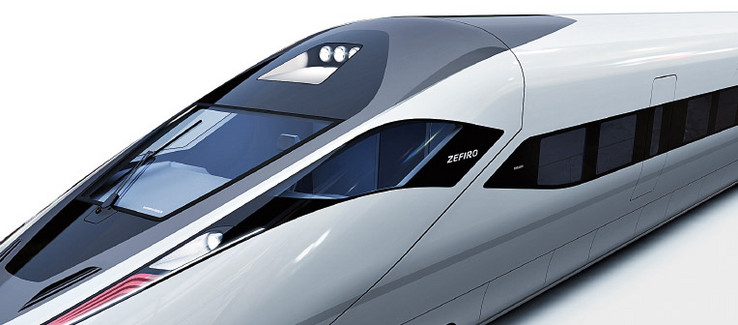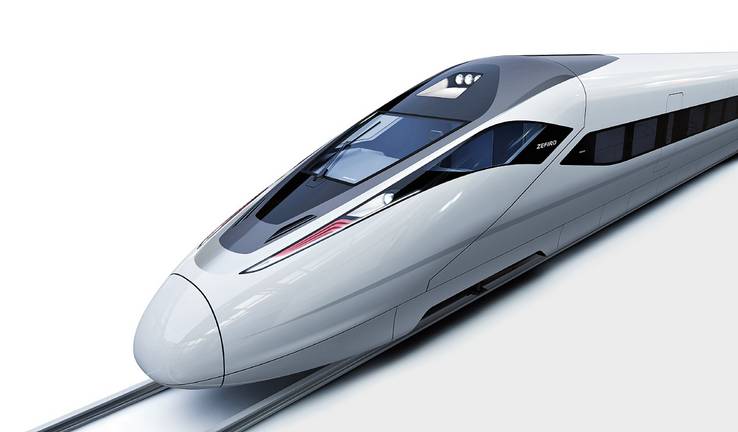Fast Train
China’s railway system is growing in leaps and bounds – and with it, the Chinese train industry. CSR Zhuzhou Institute, a driver of this development, is now working with EPLAN Harness proD for wire harness engineering.
China’s railway system is growing in leaps and bounds – and with it, the Chinese train industry. CSR Zhuzhou Institute, a driver of this development, is now working with EPLAN Harness proD for wire harness engineering. CSR Zhuzhou Electric Locomotive Research Institute Co., Ltd – CSR Zhuzhou Institute for short – was founded in 1959 as Zhuzhou Electrical Locomotive Research Institute of the Ministry of Railways. After fifty years of dynamic development, CSR Zhuzhou Institute has grown to become a global company, with development facilities in Michigan (USA), Lincoln (UK) and Sydney (Australia). Nowadays the institute’s fields of activity include electric motors, power electronics, automation, polymer composites and renewable energy. CSR Zhuzhou Institute has high standards for the applications used in the development process. When working on the wiring layout of rail vehicles, the company’s design engineers reached the limits of the solutions they had been using previously. The mechanical components used in the rail vehicle sector are extremely complex, and wiring these components is challenging. Although CSR Zhuzhou Institute’s designers frequently used 3D applications to simulate the wiring between electrical components and create the necessary manufacturing documentation, it proved difficult to incorporate changes into the wire harness. There was a lack of consistency and integration in the process. The connection lists had to be adjusted manually, for instance, which led to problems when there were extensive modifications. “The more cables we added to the connection list, the more confusing the product’s 3D model became,” says production processes engineer Ding Zuhui. Manufacturing drawings were created manually, and the required material data was first entered by hand into a parts list system and then again into a PLM system. “We needed integration across the wire harness design and the mechanical construction, as well as the possibility to be able to show the wire harness data in the mechanical data. Our previous system couldn’t offer that.”
Standardised Data Created
When EPLAN began to dialogue with CSR Zhuzhou Institute in 2013, the performance requirements were clear: integration! Success came in the implementation of EPLAN Harness proD, which perfectly integrates into the existing CAD landscape and imports mechanical construction data from the MCAD system being used. The wire harness engineers can now verify the wire harness by means of various verification procedures – for instance, bending radius, bundle diameter (including American wire gauge) and wire harness collisions within the mechanical mounting brackets or length limitations. Cable bundle data can be transferred seamlessly and bidirectionally with practically every MCAD system. The data for the individual wires, connectors and plugs can be made available for the next step of the process. Furthermore, the wiring lists with wires, connectors and plugs from EPLAN Electric P8 can be used directly in EPLAN Harness proD – data exchange is bidirectional. EPLAN Harness proD can even handle wiring lists from other sources, such as Microsoft Excel and lists in TXT or CSV formats. According to Ding, the biggest advantage is the parallelisation of the development process. EPLAN Harness proD allows wire harnessing to begin in the digital prototype phase of mechanical construction. Many errors that were first recognised only once the physical prototype was created – meaning very late in the development process – can now be eliminated during the product development process. This reduces the amount of time necessary for projects. Three-dimensional wire harness design has only been used in China for a few years. EPLAN Harness proD represents a highly efficient and readily available solution for this task. “EPLAN Harness proD can further advance our development of these complicated products,” says Ding.



